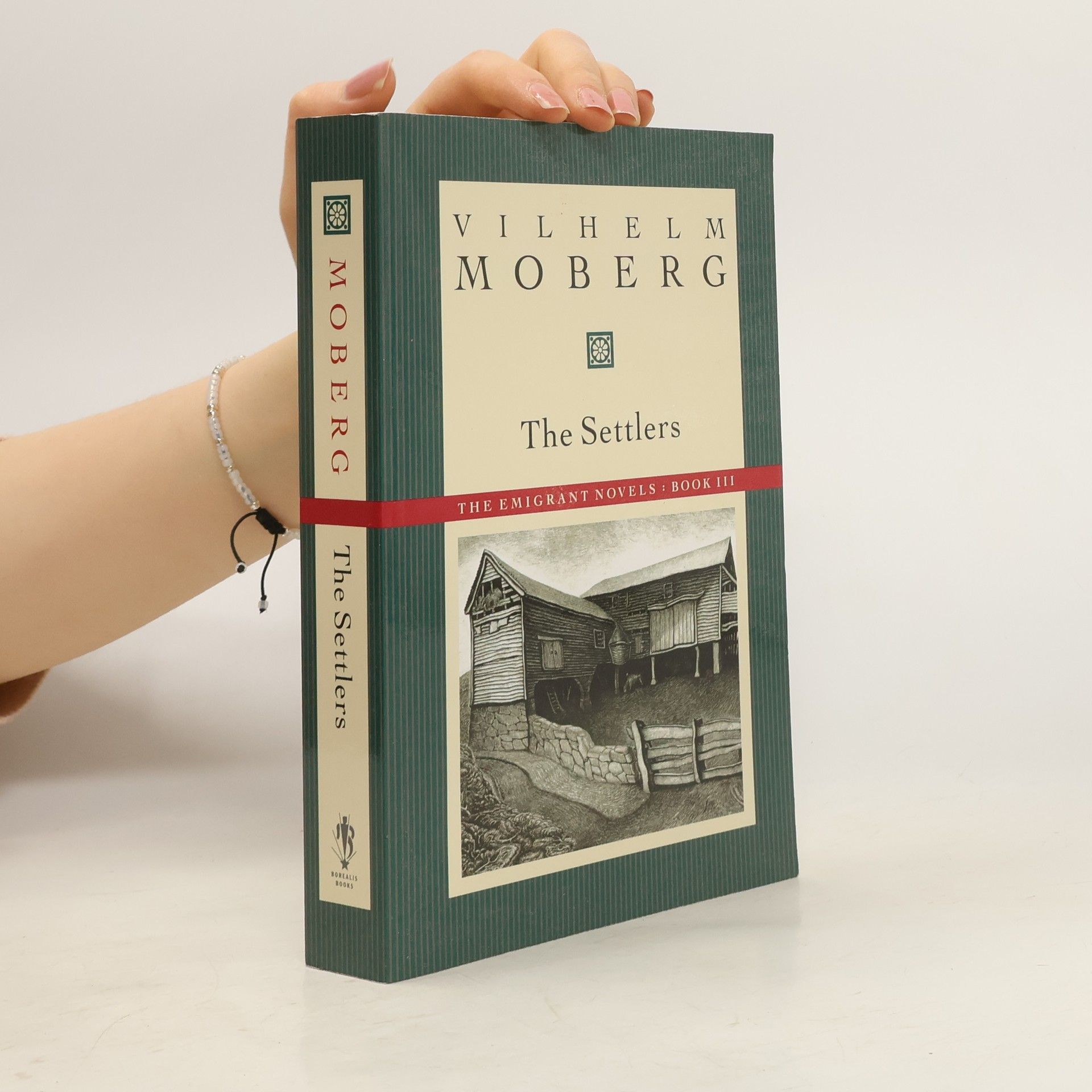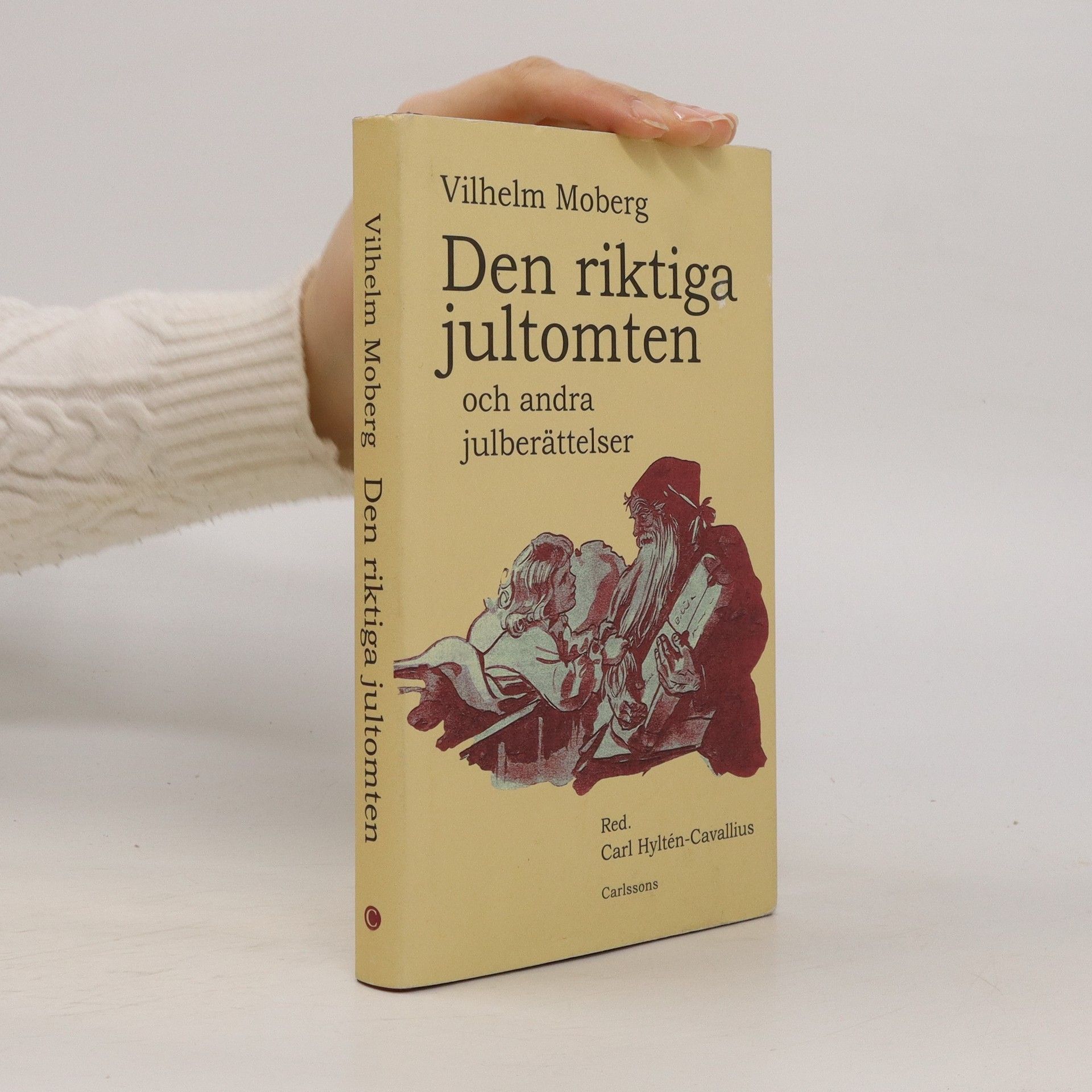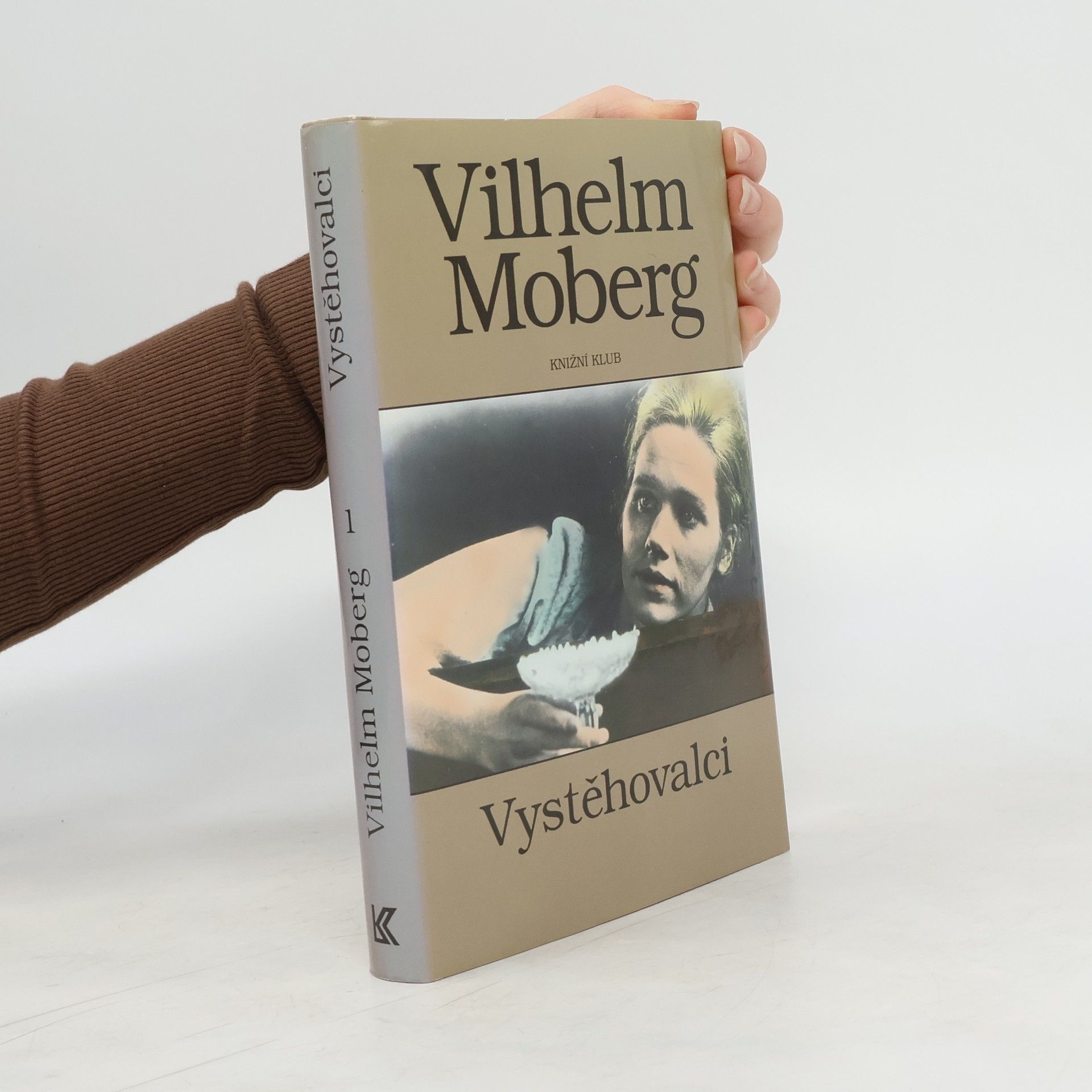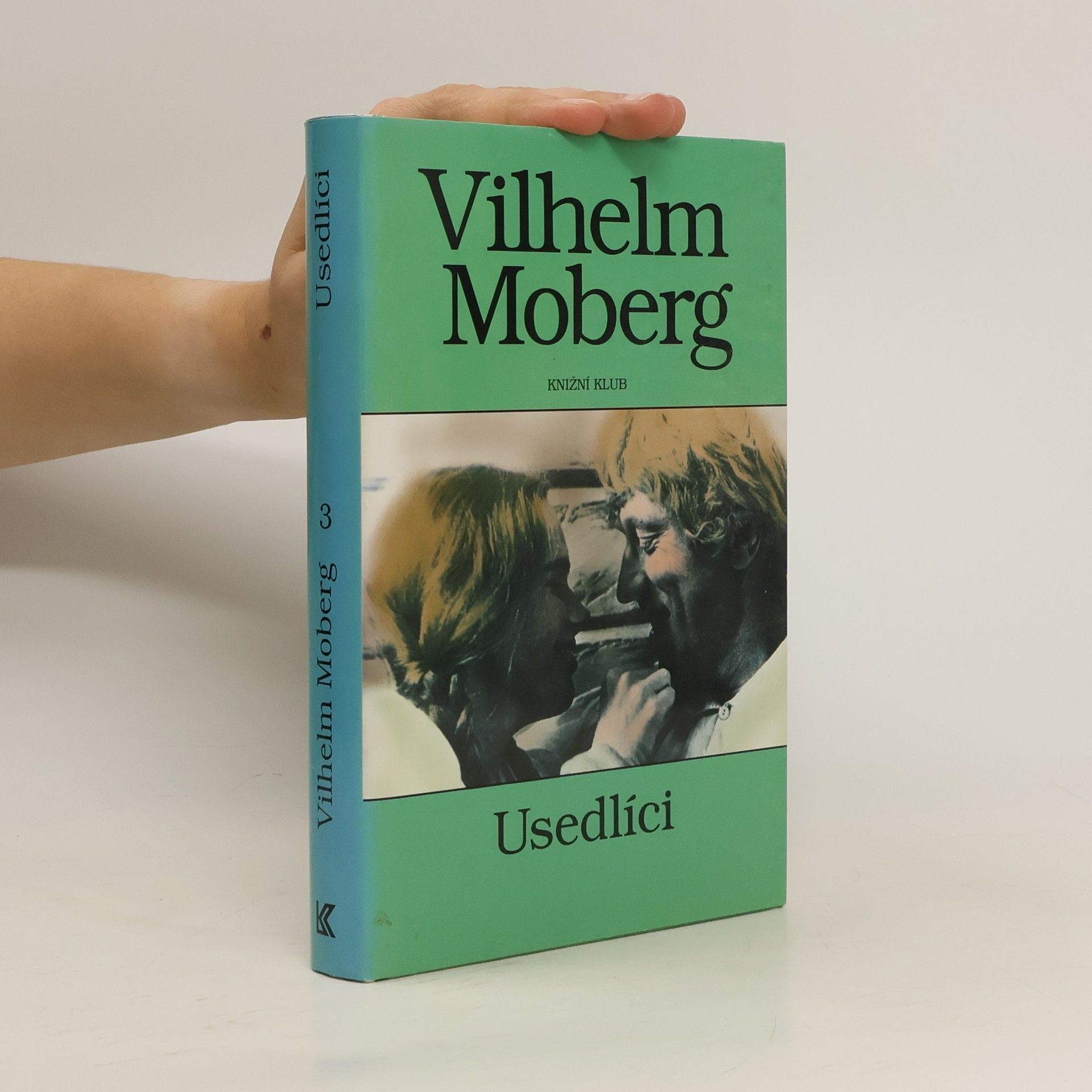Vilhelm Moberg Book order
Vilhelm Moberg was a Swedish author celebrated for his novels chronicling the experiences of Swedish emigrants to America. His literary contributions delved deeply into Swedish history and societal issues, fearlessly critiquing the monarchy, bureaucracy, and corruption. A prominent public intellectual, Moberg was an ardent debater, engaging in public discourse and vehemently opposing totalitarian regimes. His writing style is esteemed for its authenticity and its profound ability to capture individual destinies within historical contexts.







- 2013
- 2011
Voici l'histoire des premiers pionniers suédois partis conquérir l'Amérique et comment leur vint l'idée de s'expatrier : Kristina et Karl Oskar, jeune couple héritier d'une terre aride qui ne parvient guère à nourrir les huit bouches de la maisonnée ; Robert, le frère de Karl Oskar, un contemplatif qui aspire à la liberté... placé comme valet de ferme alors qu'il ne rêve que de l'Amérique ; son compagnon d'infortune, Arvid ; l'illuminé Danjel Andreasson, digne héritier de son ancêtre condamné pour hérésie ; et la catin du village, Ulrika de Västergöhl, dont on se détourne quand on la croise, mais qu'on vibre de visiter la nuit, incognito... Les paysans du Småland, province du sud-est de la Suède, vivaient paisiblement de leurs terres. En dehors des naissances, des mariages, des enterrements, ils ne connaissaient guère d'autre péripétie que l'alternance des saisons. Vers le milieu du xixe siècle, cet ordre immuable commença à trembler sur ses bases. Les terres sans cesse divisées par les héritages vinrent à manquer. Et les échos venus d'au-delà de l'Océan donnèrent des envies de liberté. Au pays est le premier volume de l'épopée de ces gens ordinaires animés du soufße de l'aventure et du formidable espoir de recommencer leur vie.
- 2010
Den riktiga jultomten
- 167 pages
- 6 hours of reading
Tretton julnoveller av Vilhelm Moberg, publicerade i tidskriften Smålänningens Jul, Vecko-tidningen Såningsmannen, Smålandsposten samt De vanföras tidning (julnummer).Följande noveller ingår i boken: Min barndoms jul, Elias på Lyckans Höjd, Den hemska julgästen, Jonas Petter i Baggemo hugger julgranar, Jarls julafton, En tröskekarl, Gammaldags julotta, Åtta dagar före jul, Julgalten slaktas, En dramatisk julotta, Tredjedagsfesten på Ljungsäter, Den riktiga jultomten, Niklas får julfrämmande.Boken är ett samarbete med Vilhelm Moberg-Sällskapet och är nummer 22 i Vilhelm Moberg-Sällskapets skriftserie.Karl Artur Vilhelm Moberg, född 20 augusti 1898 i Moshultamåla i Algutsboda församling i Småland (då Kronobergs län, nu Kalmar län), död 8 augusti 1973 i Grisslehamn i Väddö församling i Stockholms län, var en svensk författare, dramatiker och journalist. Han är kanske mest känd för Utvandrarserien från 194959.Carl Hyltén-Cavallius är Mobergkännare och Mobergsamlare och styrelseledamot av Vilhelm Moberg-Sällskapet.
- 2005
Beginning in prehistoric times and culminating with the Dacke rebellion of 1542, renowned novelist Vilhelm Moberg's two-volume popular history of the Swedish people approaches its subject from the viewpoint of the common people, documenting peasants' lives as well as those of the royal families. In this first volume Moberg examines Viking raids, the coming of Christianity, and the Folkungs royal dynasty, whose tyrannical reign lasted from 1250 to the 1360s. He vividly describes the arrival of the Black Death from a ship that docked carrying only dead passengers, and he recounts the reign of Queen Margareta who founded the Kalmar Union, comprising all of Scandinavia. In every chapter, Moberg faithfully imparts how history affected "the whole people" of Sweden.
- 1994
Vystěhovalci 4: Poslední dopis do Švédska
- 219 pages
- 8 hours of reading
4. část rodinné ságy V poslední části románové ságy se uzavírají osudy Nilssonovy rodiny.
- 1994
Přistěhovalci
- 363 pages
- 13 hours of reading
2.díl tetralogie 24. června 1850 přistála vystěhovatelská plachetnice u přístavního mola v New Yorku. Autor líčí první kroky hrstky vyčerpaných, hladových a nemocných švédských chalupníků na půdě vysněné země, kde musejí v budoucnu svést urputný a ne vždy vítězný boj s přírodou.
- 1994
Vystěhovalci
- 343 pages
- 13 hours of reading
1.díl tetralogie. Hrdinou široce koncipované rodinné ságy je silný a sebejistý švédský sedlák. Když zjistí, že přes veškerou dřinu není schopen doma uživit své děti, rozhodne se vystěhovat do Ameriky společně se skupinou svých krajanů. Osudy hrdinů jsou organicky zasazeny do epického vyprávění a jejich očima a jejich zkušenostmividí autor americký svět. Velký důraz klade na ty lidské vlastnosti, které dělají život snesitelný i za nepříznivých okolností.
- 1994
Considered one of Sweden's greatest 20th-century writers, Vilhelm Moberg created Karl Oskar and Kristina Nilsson to portray the joys and tragedies of daily life for early Swedish pioneers in America. His consistently faithful depiction of these humble people's lives is a major strength of the Emigrant Novels.Moberg's extensive research in the papers of Swedish emigrants in archival collections, including the Minnesota Historical Society, enabled him to incorporate many details of pioneer life. First published between 1949 and 1959 in Swedish, these four books were considered a single work by Moberg, who intended that they be read as documentary novels. These editions contain introductions written by Roger McKnight, Gustavus Adolphus College, and restore Moberg's bibliography not included in earlier English editions.Book 3 focuses on Karl Oskar and Kristina as they adapt to their new homeland and struggle to survive on their new farm.
- 1994
První ze čtyř dílů proslulého románu o švédských vystěhovalcích v Americe, známého též z úspěšného filmového zpracování. 24. června 1850 přistála vystěhovatelská plachetnice u přístavního mola v New Yorku. Autor líčí první kroky hrstky vyčerpaných, hladových a nemocných švédských chalupníků na půdě vysněné země, kde musejí v budoucnu svést urputný a ne vždy vítězný boj s přírodou. Další část rozsáhlého eposu o osudech švédských vystěhovalců v Americe v druhé polovině 19. století líčí první okamžiky po vylodění a cestu do nového domova.... celý text
- 1994
Vystěhovalci 3: Usedlíci
- 395 pages
- 14 hours of reading
3. část rodinné ságy Rodina se usazuje v Minnesotě, kde staví dům a začíná obdělávat půdu.





